How long should an eBook be? The answer might surprise you!

Let me guess:
You’re here because you want to publish an eBook, but you’re not sure how long an eBook should be to sell well?
If the answer is yes, then you’ve just hit the jackpot:
In this blog post, I’m going to let you in on some insider info—our very own research on eBook length and pricing, including what types of eBooks sell best.
And, since digital publishing is on the rise, I’ll also provide a solution on how to get started selling eBooks and making money right away. So, keep on reading!
So, how long should your eBook be?
According to our research, the average length of a best-selling eBook can be anywhere between 20-50 pages (and, sometimes, even 100). But, depending on several factors, it can also be less than 20.
So, how many words should an eBook be? What’s the sweet spot?
The answer might surprise you:
eBook word count doesn’t matter as much as you think it does. What really matters more is the value you add to it.
In the words of Sellfy creator and hair care expert EfikZara:
Focus on adding value. It’s important to ensure that you’re adding value to whatever eBook you’re selling. For example, I ask myself, “What can I give to this person who is lamenting and asking me how they can remedy their hair issue?”
The importance of quality over quantity
So, eBook length aside, what truly really matters is the quality of your content, which is a major factor in how many sales you’ll ultimately make.
EfikZara concurs:
Choose quality over quantity. I could definitely put out more eBooks, but more important than a cash grab is putting out products that are effective and beautiful. So, I try to take my time to create things that would make me proud.
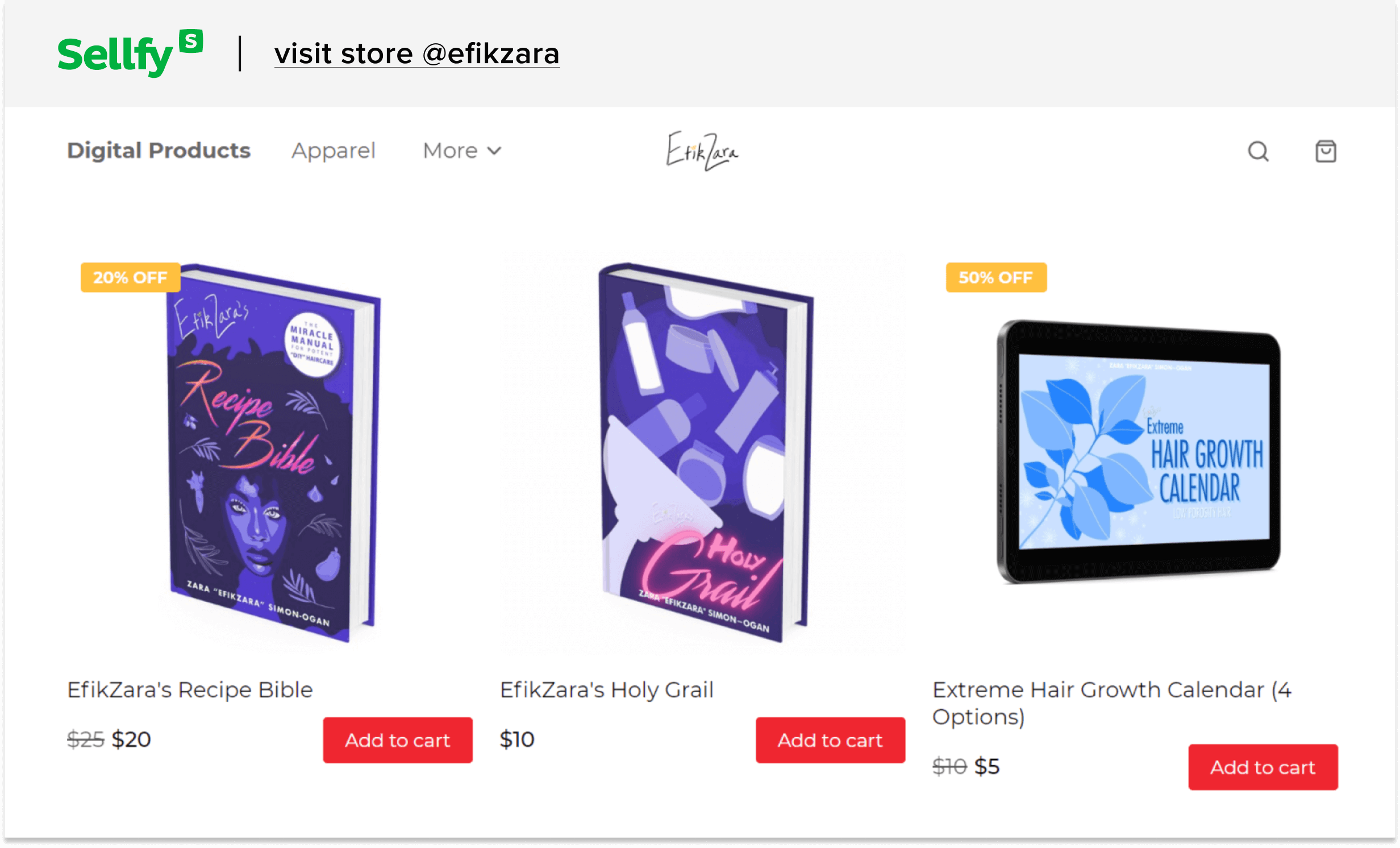
But, how do you measure the quality of your eBook? How do you know if the outcome will be a source of pride?
Let’s examine what types of eBooks are considered high-quality.
According to our research, a high-quality eBook:
- Solves the reader’s problem—knowing what types of questions to answer is of utmost importance. This requires careful research and a confident understanding of who your target audience is. Do you know what struggles they have? What problems need solutions?
- Provides more value—make it more than just black and white text. Include useful infographics, checklists, exercises, worksheets, and anything else that will stick with your audience once they’re done reading.
- Offers helpful information—does the eBook provide a list of resources that pertain to your topic? Does the information help the reader understand when, where, why, or how? When your information is easy to apply, you can rest assured that your readers will refer back to your eBook time and time again.

For instance, Sellfy creator and educational influencer Emma Chieppor (Excel Dictionary) started selling Excel guides to meet high market demand:
Once I realized that this [Excel formulas] is what people are struggling with, I came up with my Excel Dictionary to help them out. In the beginning, it wasn’t my goal to monetize my following. But, that has changed with how fast I’ve grown, and how many people need my help.
As we can see from the example above, Emma identified a problem and came up with a solution. Needless to say, her Excel guides turned into best-sellers in no time.
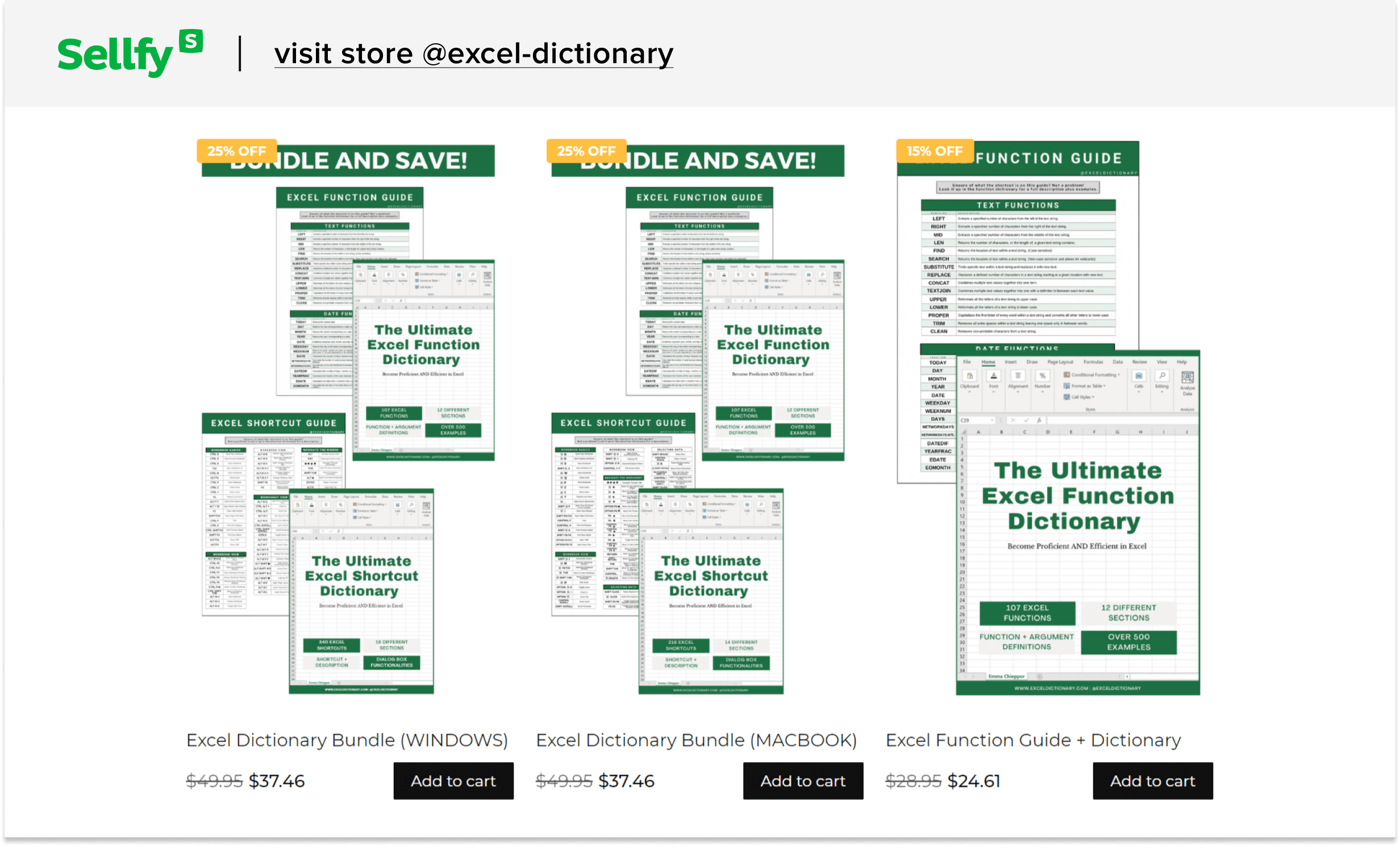
Then there’s EfikZara who, despite the initial challenges, managed to turn her first hair care eBook into a treasure trove of accurate, reliable, and informative content:
Body or hair care products have to be carefully done. So, making sure the percentages are right, and that the recipes are cohesive and accessible, was more challenging, and more important, than making sure the end product is nice.
Now, that we’ve established what a high-quality eBook is, and why you should prioritize quality over quantity, we can also take a look at what types of eBook niches sell best.
Types of eBooks that sell best:
- Fitness—workout guides are, hands down, some of the most profitable eBooks to sell. Example: certified personal trainer Ashley Keller (GlowbodyPT) has been able to make six figures in sales with her post-natal workout eBooks.
- Recipes/cookbooks—who doesn’t love food?! I think it’s safe to say that food recipes will always be in demand. Example: social media strategist and foodie Ashley Renee (Messy Eats) has been able to earn five figures in sales with her keto cookbooks.
- Self-help books—this can be any type of content that’s meant to help the reader achieve something: a spiritual or financial goal, or a shift in mindset or attitude. Example: just like Ashley Renee, Sellfy store Mind Pro Lab has also been able to make five figures in sales with their subliminal programs.
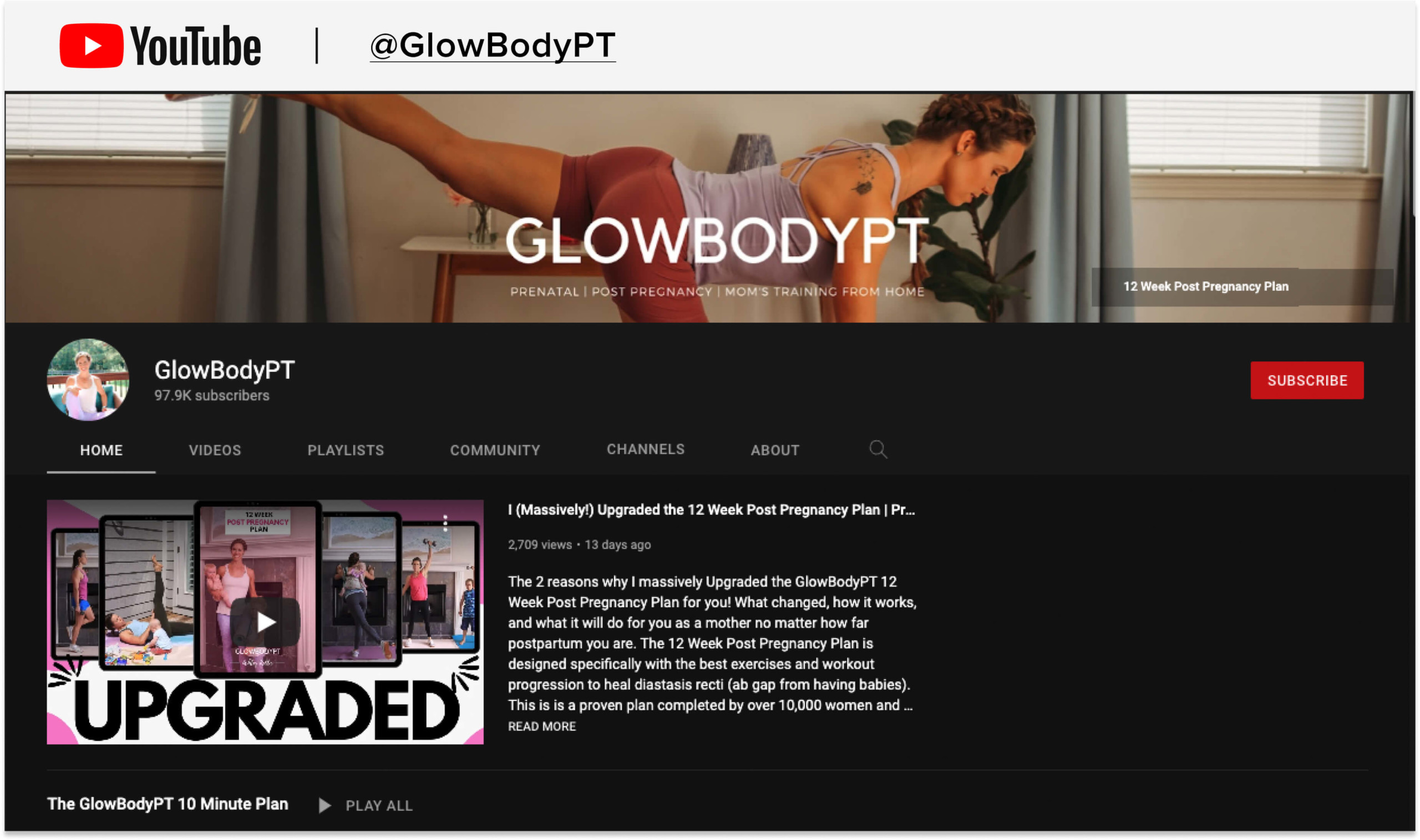
Why marketing matters more than word count
You know what else has a pivotal role in the success of your eBook? Marketing. With the power of marketing, you could even sell a single-page eBook to your audience.
The key is to demonstrate the main issue your eBook addresses and to convince most readers that the eBook will be worth their time and money—all of which can be achieved with effective marketing.
EfikZara explains:
There’s one piece of rhetoric that I see very consistently about how to market effectively. And, it’s something along the lines of the best marketing not being thrown in people’s faces. Showing what an eBook can do for people is better than simply telling them to buy it.
So, as much as your eBook may contain pages and pages of information that solve your audience’s problem, your business isn’t likely to take off unless you invest in proper marketing.
How do you do that?
The first step is to follow EfikZara’s lead—show what your eBook can do for people. A lot of people may not realize the value of your product unless you show it to them.
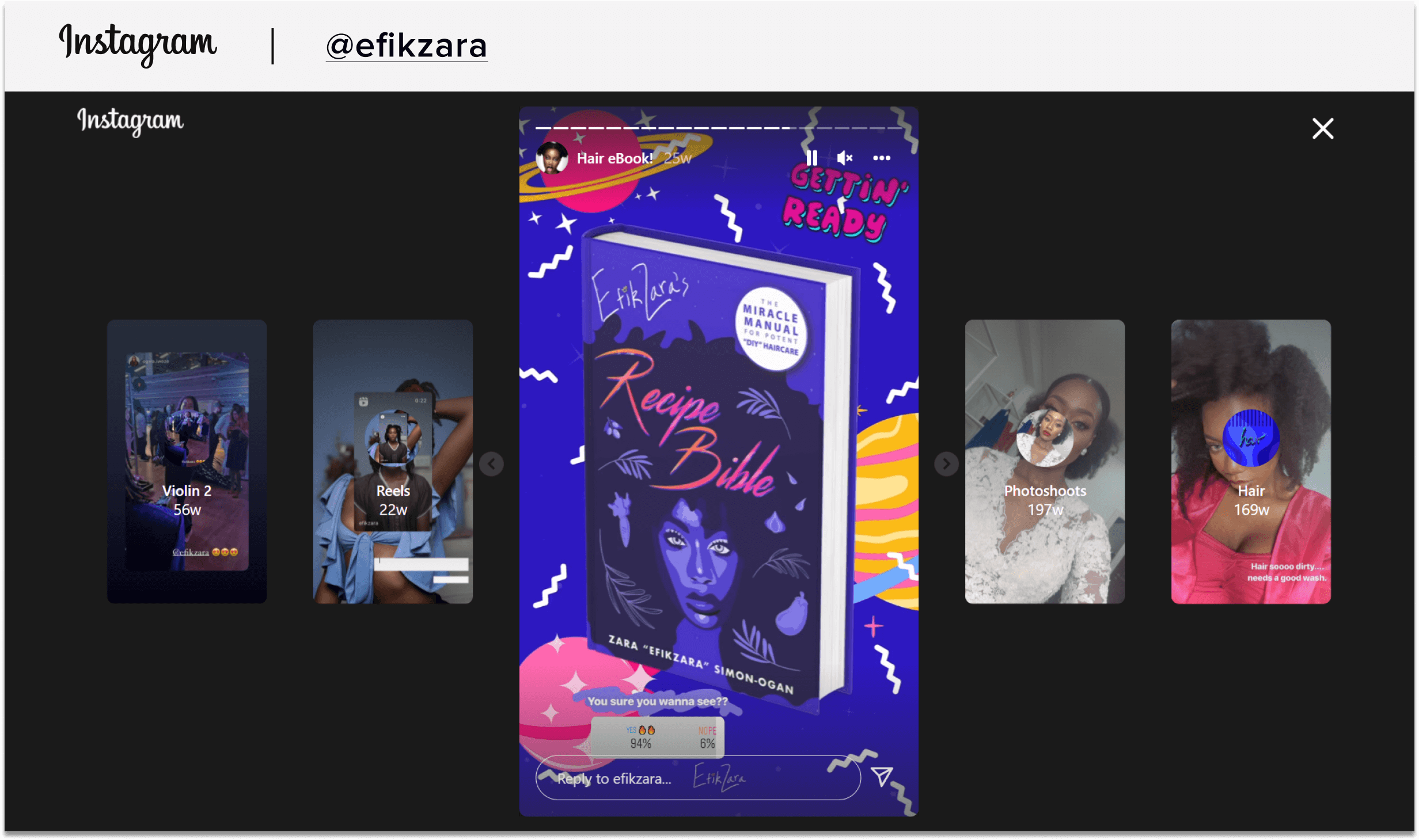
Here are a couple of strategies that have worked incredibly well for our eBook sellers:
- Showcase, don’t tell. Honestly, there’s no better way to launch your eBook than to showcase it in your photos and videos. A visual demonstration of your product can increase sales by 50%.
- Don’t miss out on the latest Instagram or TikTok trends. If you have one or both of these apps, be sure to use popular songs and filters in your videos to monetize Instagram followers (or TikTok). For example, Ashley Renee’s TikTok following exploded after she started using trending songs in her food videos!
- Generate leads with social proof. 90% of people tend to trust social proof more than anything else, so why not let your family, friends, and customer base do you a favor and spread the word about your eBook?
- Share your eBook in your bio or captions. This goes without saying, but don’t forget to let your audience know about your eBook in your captions or profile bio. Link to your eBook on all apps and platforms where you want to reach your audience.
- Use a branded hashtag & encourage tagging. Create a hashtag for your business, add it to your profile bio, and encourage fans to tag you in their content, e.g. “use my #brandedhashtag to get featured in a post!”
- Gamify your eBook content. Hold contests, or come up with quizzes, questions, and exciting polls about your eBook to increase audience engagement. For example, you can create polls using Instagram Stories.
- Film your lifestyle or the eBook creation process. This is a tactic that Ashley Renee loves to use, and it has worked out wonderfully for her. Remember, your audience wants to see that you’re more than just someone selling an eBook. So, take them behind the scenes, or go all out and vlog your entire lifestyle—make people feel connected with you.
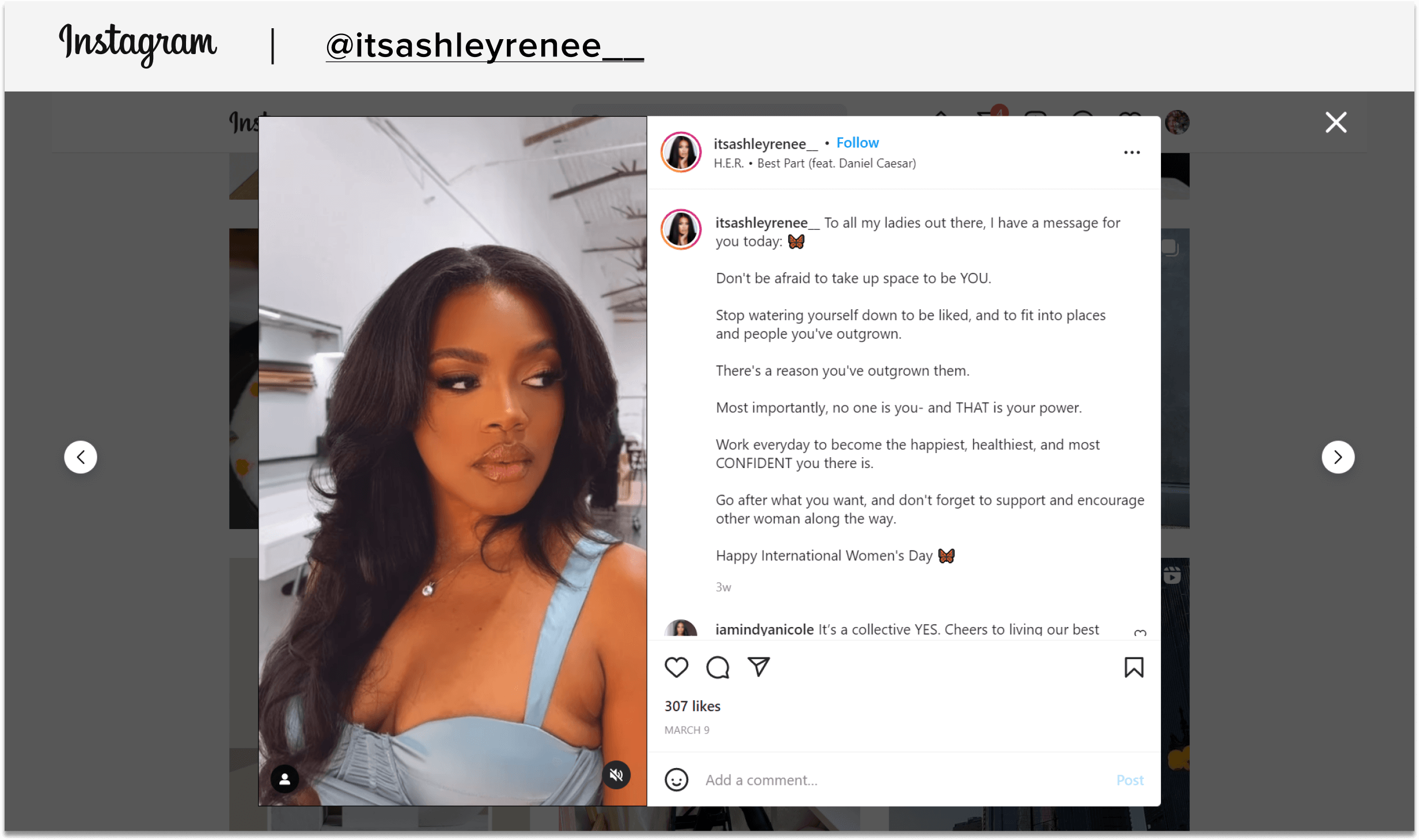
What about eBook length & price?
Is there such a thing as eBook pricing by word count?
As I’ve mentioned earlier, a majority of the most expensive best-sellers (priced at $100 and above) can be up to 50 pages long on average. An eBook of that length is relatively easy to digest yet still has enough information to match the high pricing.
Interestingly enough, some moderately successful eBooks in the $20.00–29.00 price range can even have as many as 100 pages, whereas eBooks priced between $5.00–13.00 are normally up to 20.
So, as we can see, for the most part, the pricing does seem to match the length, at least for the most and the least expensive eBooks. However, the same cannot exactly be said for mid-range book prices ($20.00–29.00), which, for some reason, tend to vary greatly when it comes to word count.
But, remember:
Pricing is all about perceived value. No matter how long or short an eBook is, it’s the benefit that counts.
For example, Sellfy store Tanei the Science Guy has been able to make a massive profit with The Ultimate Hair REgrowth Regimen eBook.
The price of the eBook is $350. Can you guess how many pages it has?
It’s just a single-page PDF file, yet the perceived value of the eBook almost surpasses people’s expectations. This is an eBook niche that is extremely popular because a lot of people struggle with hair loss.
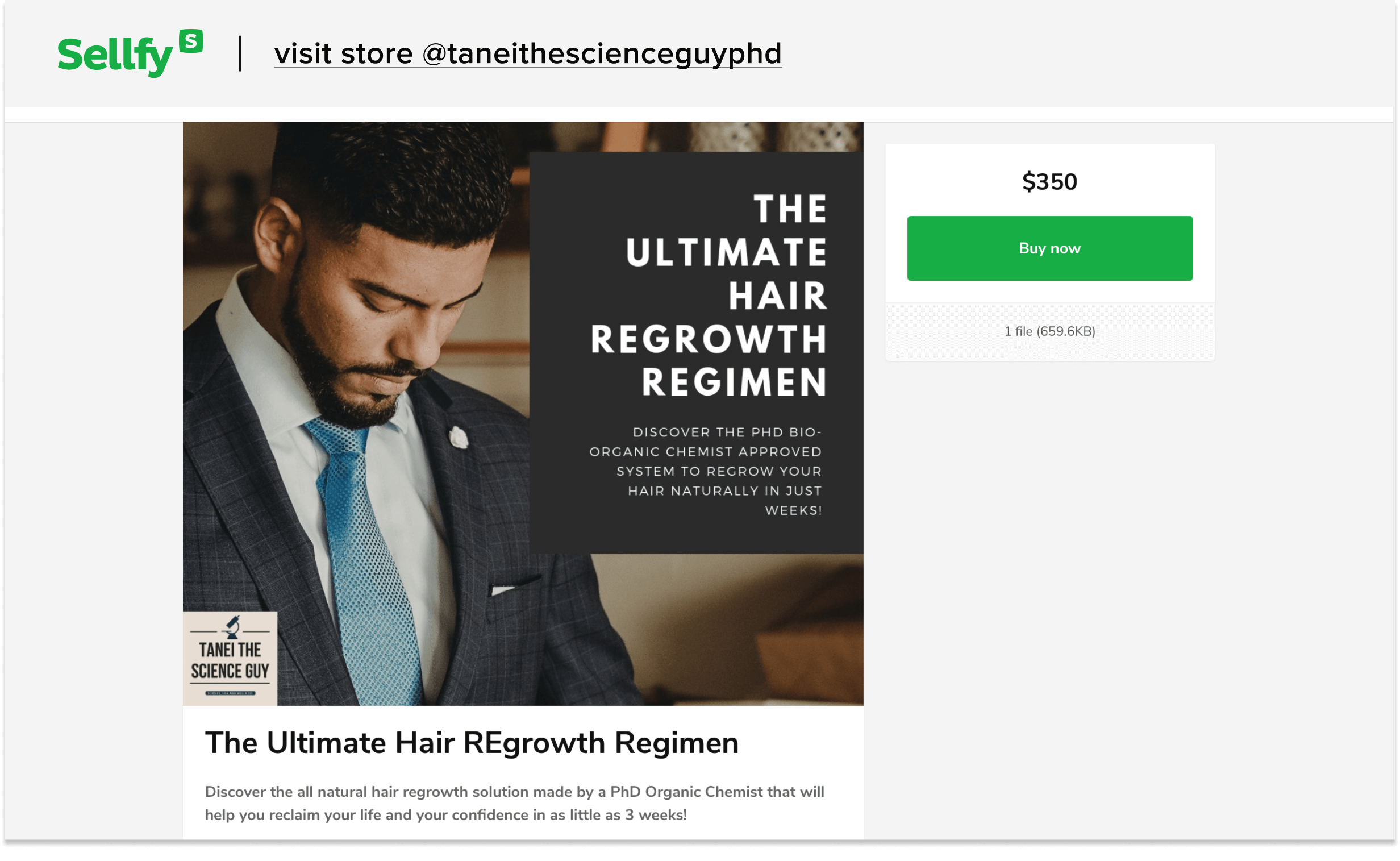
So, the main key takeaway from this is to go extra bold with your pricing if the market demand is very high. The higher the pricing ($100–300), the more profit you’ll be able to make. And, the word count wouldn’t even matter.
To sum it up, our research suggests that:
- Established creators with huge audiences in their niche are much bolder with their pricing. Their best-selling eBooks will cost well above $100 regardless of length (although 50 pages do seem to be the standard).
- Micro-creators or beginners with smaller audiences will usually start out with a lower price—around $13 on average. The standard eBook length can be anywhere between 10-20 pages, and sometimes even more.
More than 1000-word eBooks
Writing eBooks that exceed 1000 words is ideal for a creator who wants to become a self-published indie author and gain wider recognition. It also works well for audiences that want to explore a complex subject or story.
Many indie authors like to go the Amazon Kindle Direct Publishing route. If that sounds like you, then you might be wondering about things like minimum pages for an eBook on Amazon, or how long an eBook should be for Kindle.
To put it simply, there is no minimum number of pages required for self-publishing on Amazon Kindle—you can write a 10-page eBook or a 20-page eBook. It’s completely up to you.
The only thing you have to keep in mind is that Amazon has a list of eBook price requirements.
Here are some examples of long eBooks:
- Full-length novels
- Children’s books
- Short fiction
- Short stories
- Print books
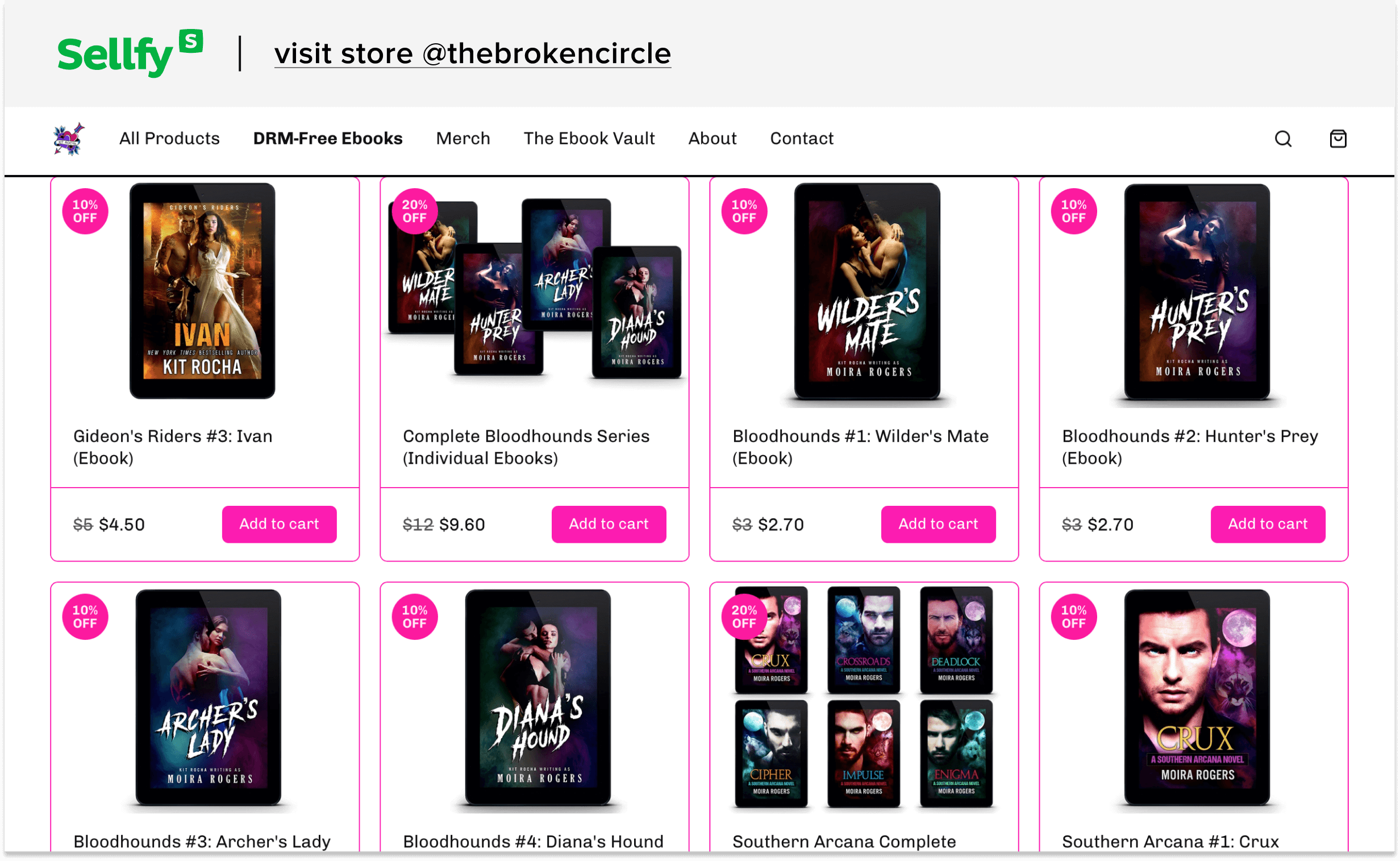
Less than 1000-word eBooks
Writing less than 1000-word eBooks works well for a creator or expert who wants to sell information or knowledge; or share advice, recommendations, or experiences to a niche market.
These types of eBooks are usually sold on the creator’s own online store or website where they have more control over profit (as opposed to self-publishing on Amazon Kindle).
Aside from profit, shorter eBooks generally have a higher conversion rate. They can also be used as lead magnets (e.g. for a free giveaway).
Here are some examples of short eBooks:
- Guides (e.g. travel, relocation, tourism, career, nutrition, beauty, fitness, etc.)
- Lists/summaries (research)
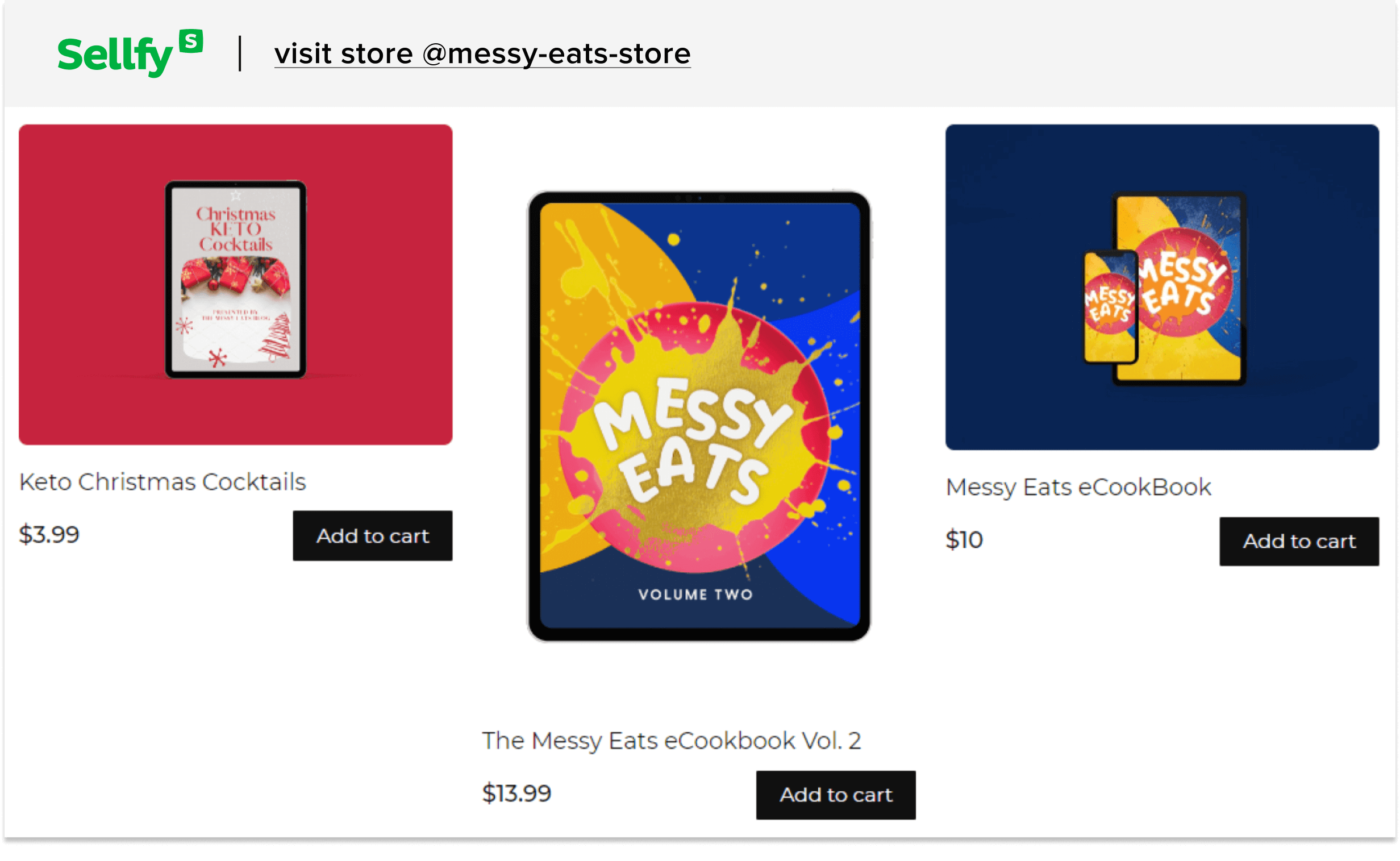
How to create & sell your eBooks with Sellfy?
If you’ve been looking for a way to sell your eBooks, then you’ll absolutely love Sellfy. Sellfy is an easy-to-use eCommerce platform for digital creators looking to start an online business.
You can sell just about anything with Sellfy (not just eBooks)—digital products, subscriptions, physical goods, and even print-on-demand merchandise.
Here’s what you’ll get from a Sellfy store:
- Top-notch file security
- Supports EPUB & PDF files
- PDF-stamping
- Unlimited bandwidth
- Built-in marketing tools & SEO
- Automatic file delivery
- Fully customizable storefront
- Mobile-first design
- No hidden fees
- 24/7 customer support
- Advanced VAT & tax settings
- Multiple payment options
- Instant payouts
- App integrations
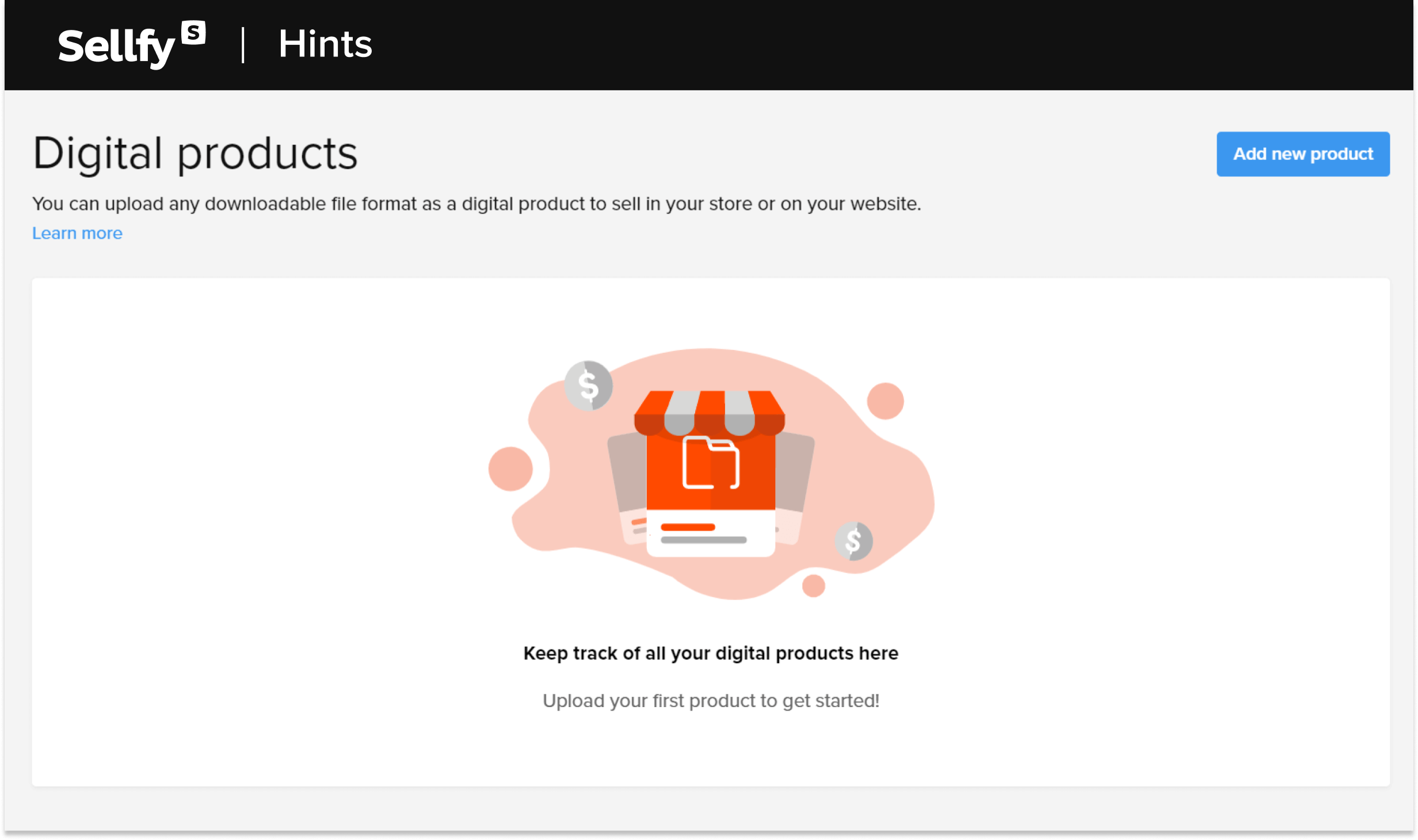
Another thing you’ll enjoy is being able to prepare as many as 50 files per product. And, on top of that, you also get unlimited storage, which means that your product file size can be up to 10 GB (all static file formats are supported).
Ready to get started? Follow these steps to sign up for Sellfy:
- Start a 14-day free trial. All you need is a valid and verified email address. If you need access to more features, you can always upgrade to a paid plan later.
- Choose a premade theme for your store design, or design your store from scratch with the Store Customizer tool.
- Upload your eBook, set a price, hit Save product, and your eBook will be live in your store!
If you’re ready to get serious with your business, then you can go right ahead and pick a subscription plan.
Here’s a rough overview of the plans we offer:
- Starter—for creators who want to sell an unlimited number of eBooks, get access to 2000 email credits, and use a custom domain.
- Business—for creators who have high sales volumes and want a white-label store, store design migration, cart abandonment, product upselling, and 10,000 email credits.
- Premium—for creators who have the biggest sales volumes and want product migration, priority support, 50,000 email credits, and extra tools to promote their eBooks.
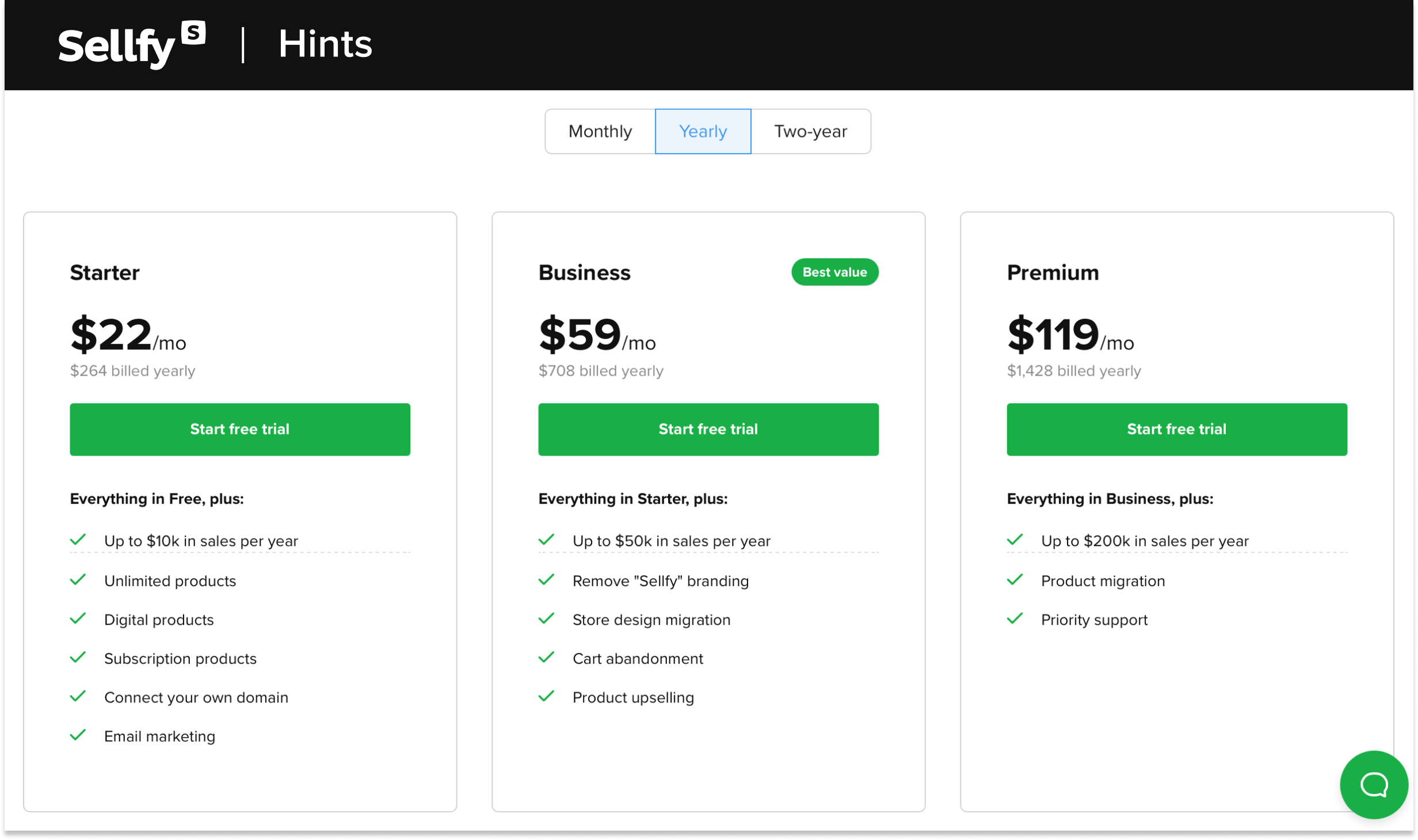
Optional: embed the eBook on your website
Do you already have an existing website?
Then you can also connect your domain or use one of our embed options to integrate the Sellfy checkout, specific products, or the whole store into your existing website:
- Buy now button—allows you to add a call-to-action button that can be paired with your own site design, product images, and description.
- Single product—allows you to feature a single product along with the description, Buy now button, and uploaded images (you can customize it and embed the code on your site).
- All products—allows you to add the whole Sellfy storefront with all of your eBooks to your site.

Design an eBook cover that embodies your work
To ensure a successful eBook launch, you need to have a kickass eBook cover. Not sure how to design a cover? No worries!
There are plenty of great eBook cover design resources:
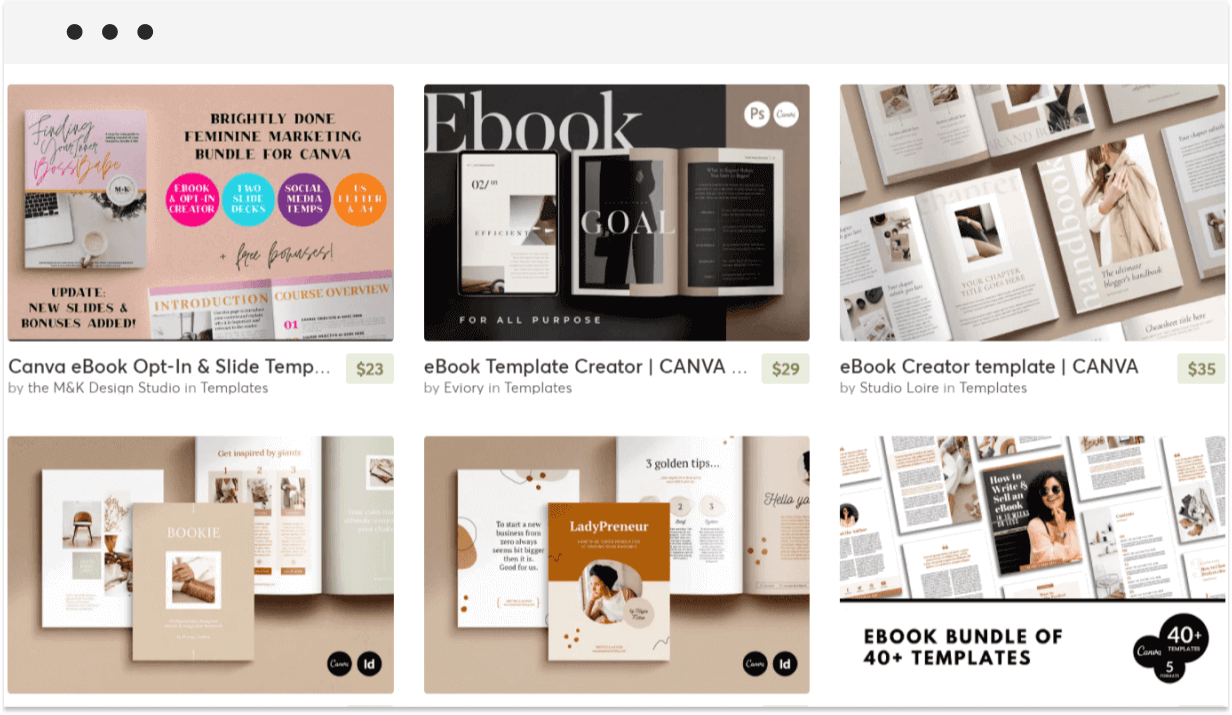
However, using a free tool like Canva is by far the easiest solution. Canva offers a great selection of eBook cover templates. Alternatively, you can also check out Beacon and Microsoft Office.
To learn more about how to design an eBook, head over to our article on 8 free and paid ways to create a kickass eBook cover.
A successful eBook provides value
In this article, I’ve presented our in-depth research on eBook length and pricing as well as best-selling niches. I hope you’ve found this information useful!
My final verdict on the topic is that an eBook can be any length as long as it provides value to readers. After all, customer satisfaction is the main force behind the success of your eBook, not word count.
To learn more about selling eBooks or any other digital products with Sellfy, make sure to check out our blog for some useful tips and tricks.






